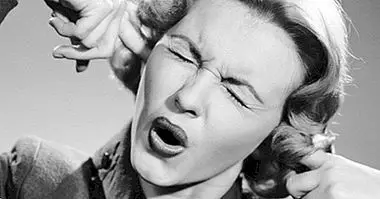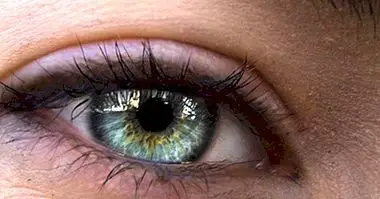Why is there still discrimination against women?
In the 21st century, Acts of violence and discrimination against women continue to be a scourge in our society . Specifically in Spain, more than 1,000 women have been murdered since 2001 by their partner or former partner, and 1.4 million have been victims of sexual violence. To appreciate the seriousness of the matter, there is no more to ask the women around you if at some point in their lives they have been harassed or sexually violated by a man.
Although several countries have made some progress in terms of jurisdiction and equality, there are many elements that show that there is still much work to be done, especially in terms of education for gender equality and awareness. Social.
Even though the use of violence and discrimination against women part of different causes totally varied (individual factors, interactional causes -such as the transgenerational transmission of macho values and operating patterns- and institutional causes) in this article we are going to refer explicitly to the cultural causes that sustain and maintain discrimination and violence against women: patriarchy.
- You may be interested: "The 16 types of discrimination (and their causes)"
What is patriarchy?
Many believe that patriarchy does not exist, that it is an exaggeration and / or a biased interpretation of reality. To our understanding, patriarchy is a form of social organization in which the social values associated with the masculine gender have the power and keep the values associated with the female gender subdued.
In fact, machismo as a culture (and not as behavior) is protected through the patriarchal model. Machismo is the social construction that understands masculine references as universal and as immovable , unquestionable. For this reason, for many years there has not been a strong and critical social reaction towards gender violence, towards discrimination or harassment against women. Silence and justifications on the part of macho thinking are necessary for the continuity of patriarchy.
It seems simple, but it is not: how does patriarchy materialize? What is translated? How is it evident in our lives? A very clarifying example, taken from a great expert in the area such as Elena Garrido Gaitán, consists of the movie Matrix. Patriarchy would be like a set of norms, values and material dispositions (distribution of private property, for example) that covers us constantly since we are born, is difficult to appreciate and evidence, and is totally rooted and universalized in society, so internalized that sometimes its own existence is denied. In order to "see" it, it is necessary to make an awareness exercise.
Following the patriarchal model, a man "really" has a penis, works with a male gender role and is heterosexual. The woman, on the other hand, has breasts and a vagina, works with the female gender role (in fact, the more feminine the more "authentic woman") and is heterosexual. If any man or woman dares to get away from this model, it is considered as not valid or not authentic.
- Maybe you're interested: "Micromachismos: 4 subtle samples of everyday machismo"
What does patriarchy have to do with discrimination against women?
Surely many of you have asked how the social model of patriarchy influences the appearance of dynamics of violence and discrimination against women . It is not easy to answer this question, but we will try.
Patriarchy "builds" us and shapes us as men and women , with our rights and obligations: how we should be if we belong to one biological sex or another. We have a kind of predetermined script of how we should function in a couple relationship (men: strong, responsible, hard, not showing weakness ..., women: dedicated and caring, affectionate, submissive and obedient).
There are several elements that can lead men and women of the patriarchal model to a crisis.
Infidelity
That women are unfaithful to men poses a direct threat to their status as masculinity and power. Instead, the seduction by man towards other women can increase his "power" (Paradoxically, the woman is quickly labeled promiscuous, at least). To see this example in society, let's think about adolescents: how the peer group reacts with a boy who has linked up with 4 girls on the same night; Now let's imagine if the one that has linked with 4 guys is a girl.
The sex
The eternal concern for male size and performance, as well as the number of sexual partners. In addition, thanks to the invisibility of female masturbation it followed the patriarchal fantasy that only one man could give pleasure to a woman (obviously, with his penis).
The expression of feelings
Man can only express feelings that show his power (joy, anger). There are other emotions that are mistakenly judged as "weak", such as sadness, fear, and so on. In fact, many men show anger when in reality what happens to them is that they are sad, afraid or feel shame.
Money
This element is an elongation of masculine power. It is a fundamental point in psychological abuse , where it is man who controls the access and distribution of money. It is a tool of brutal power, associated with the gender perspective.
- Related article: "The 30 signs of psychological abuse in a relationship"
The loss of power as a loss of masculinity
As we can see, some men are in constant search of power and its maintenance. But ... what can happen when they feel that this power is being threatened or is in danger?
The last four factors could focus on this fundamental element for the genesis of gender violence: the loss of power of man. What is at stake is the masculinity of the male, and this is where the danger lies. Unfortunately, some men use violence as a quick tool (and totally maladaptive) to return to "normality" (its normality: to continue having the power that gives them the patriarchal model within the relationship).
In cases of gender violence, men perceive their victim as a threat, a danger that can generate an imbalance of power. On the first occasions it is usual that the way to restore power is subtle (eg, with comments, with attempts to control the routines of the victim, uncomfortable silences, manipulation, isolation ...). The fundamental problem of aggressors is the inadequate interpretation of the threat (Is it really so threatening that the woman contradicts our operating scheme? Why should things be as one has learned since childhood or as our family models reproduce?), As well as in her totally disadaptative and disproportionate violent response .
In stories of gender violence it is common to see how violent dynamics were gradually established in the face of stressful events that led to a loss of control by the aggressor: loss of work (remember the importance of money), infidelity, birth of a child or pregnancy, abandonment of the couple ...
- Maybe you're interested: "Psychology of sexism: 5 macho ideas that occur today"
Final conclusions: differentiated socialization
Almost automatically, we build our social identity from very small depending on the biological sex to which we belong (think for example in the typical Christmas games well differentiated for boys or girls), and we are attributed with a series of determined gender expectations . That is, I (as a woman or man) know what is expected of me (emotionally, cognitively and behaviorally) depending on whether I am a woman or a man.
In this way, through differentiated socialization, based on emphasizing the differences between the sexes, the dynamics of discrimination against women are normalized: there is no need to question inequality, it is assumed that it must be normal.
In fact, the final responsible for the transmission of patriarchy to future generations is ourselves , although this one surrounds us from the beginning of our life. Starting to create more egalitarian societies based on respect towards human beings, and not towards gender roles, involves modifying both our way of thinking and the way in which we organize ourselves socially.



















